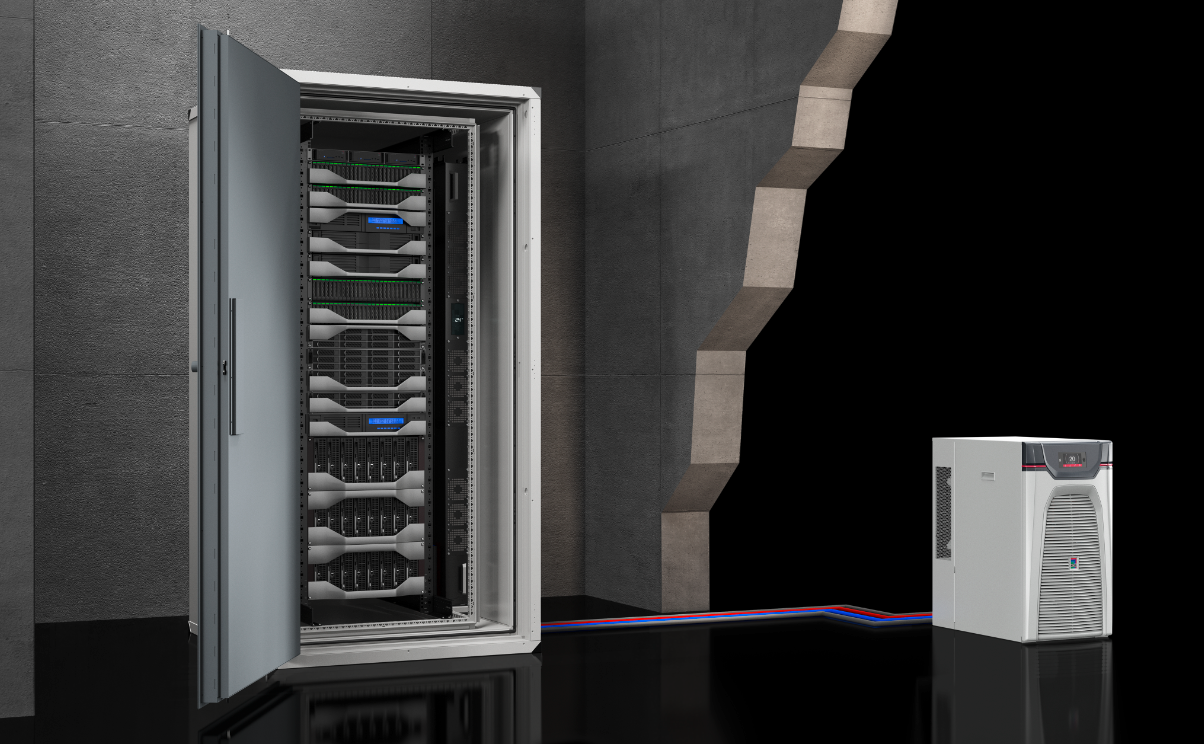
7 Top Tips for Cooling IT Equipment
As the world becomes increasingly digitalised, with a growing reliance on high-performing and reliable IT equipment, effective hardware management is essential to facilitate rapid access to large sums of data and its analytics.
The upkeep of IT infrastructure, including by maintaining appropriate temperatures, ensures the reliability and security of data and minimises the risk of system failures. In this article, we’ll explore some effective strategies to keep your healthcare IT equipment cool.
1. Optimise the room temperature
If the ambient air temperature becomes too high, it can have a detrimental effect on your IT equipment, forcing the internal fans to work harder to keep it cool. Aim to maintain a controlled room temperature between 18-27°C to prevent overheating while ensuring energy efficiency.
2. Implement aisle containment
Aisle containment in a data centre is a design strategy used to efficiently manage airflow. It involves organising server racks in alternating rows with cold air intakes facing one aisle (the cold aisle) and hot air exhausts facing the opposite aisle (the hot aisle). This arrangement helps to separate the cold air supplied to the equipment from the hot expelled air, improving cooling efficiency, reducing energy consumption, and lowering cooling costs.
3. Utilise blanking panels
Installing blanking panels in empty rack spaces is crucial to optimise cooling in server environments, as it helps to direct airflow through the equipment and prevents the recirculation of hot air, thereby maintaining a more consistent and controlled temperature. Additionally, implementing air baffling kits within the racks can further maximise cooling efficiency by effectively separating the cold intake and hot exhaust air paths, ensuring that the cooling systems work more effectively and energy-efficiently.
4. Improve cable management
Proper cable management is vital to suppress the temperature in server rooms, as structured cabling can have an adverse effect on airflow, causing equipment to overheat. To overcome this problem, cable management solutions can optimise the flow of air within IT racks, preventing the build up of heat around the equipment.
5. Implement temperature monitoring
Temperature and climate monitoring systems allow you to track ambient environmental conditions in real-time, so that prompt action can be taken to reduce the temperature if it exceeds acceptable limits. Automated alerts can notify you of any sudden changes that might lead to overheating.
6. Consider inline cooling
Advanced cooling technologies, such as inline liquid cooling, can be more efficient than traditional air-cooling methods as they place the cooling unit next to the heat source for optimum cooling performance.
7. Schedule regular maintenance
Regular maintenance of cooling systems, including cleaning air filters, checking for leaks, and ensuring the proper operation of cooling units, is essential to prevent problems that could cause the ambient temperature to rise and cooling techniques to fail when they are most needed.
Find out more
To find out more about our climate control solutions for your data centre, please get in touch with the experts at Rittal Ltd today on 01709 704000 or send us a message using our online form.




